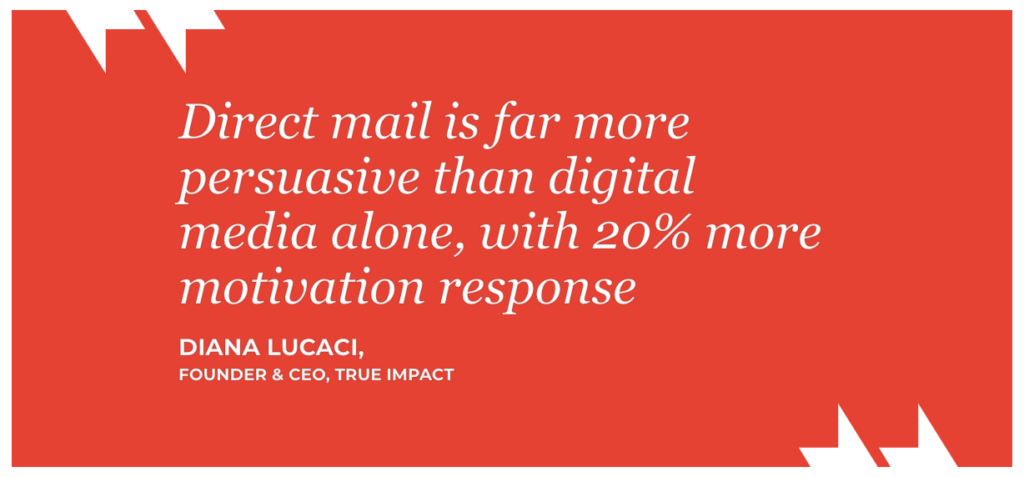 0.3 seconds.
0.3 seconds.
That’s the time it takes for physical media to create an emotional connection in a reader’s brain, according to Diana Lucaci, founder of neuroscience research firm True Impact.
“Savvy marketers understand that many purchasing decisions are made at an emotional level,” said Lucaci in an interview with Print Power. “For example, before believing facts and figures about a vehicles’ performance, a customer must first trust the automotive brand. Unlike the marketer, the customer doesn’t have performance specifications on their mind, 24/7.”
Her firm specializes in helping brands embed a brand into the memory of its audience. And to do that successfully, marketers have to engage our brains beyond the visual.
“There’s a reason we remember our grandmother’s cooking or the smell of the first new car we purchased. We associate these senses with a time, a moment, a place, even a meaningful event. And that’s what makes them so powerful.”
Lucaci believes that modern marketing strategy relies too much on user data; while it can tell us a lot about customer behavior, it doesn’t begin to tell us why they behave as they do.
“What I’m essentially saying is that our paradigm has shifted: customers are more than data, they are human,” she explains. “It’s why we use neuroscience research to optimise creative and help design marketing messages for real people. We and seek to understand how they react, intuitively and naturally, to brand experiences.
“First impression is key for determining what will enter awareness, and evaluation judgement. Within a fraction of a second, the brain decides whether or not to act,” she continues. “If you’re trying to create a message that’s going to be loved in that first second, you need to understand how the brain works; how to elicit that emotion from the get go.”
That emotion, Lucaci explains, is found in the tactile – the sensory experience is what truly engages us before we are even aware of it happening.
“The advantage of physical media, and particularly print media, is that it helps increase memorability for a brand,” she says. “If you’re sending out an email, your audience may see the headline and swipe to delete it. But as soon as something arrives in the mail or you hold it in your hands, the physical quality of the piece conveys a message and together with the design, it renders it more likely to be encoded into memory.”
Study after study has found this to be true – print resonates deeply in the human mind, and we draw almost instantaneous conclusions about a brand as soon as we touch it.
“If we’re holding thin, flimsy paper, we instantly associate that with a value offer. But the moment we feel something thicker, richer, that’s satin or maybe embossed – we instantly understand that it’s a high investment offer,” Lucaci continues. “Physical mail is a shortcut to that ‘first impression’, and it happens in as little as 0.3 seconds.”
Consumer data is important, of course. But marketers must look beyond the “what” to understand the “why.” This is the only way to establish a truly relevant and trusted emotional connection with a brand.
“Brands who wish to remain relevant always establish an emotional connection with their customers,” Lucaci concludes. “It may be trust, friendship, love, etc. Every brand should care about creating an emotional connection with consumers. And in that context, print is a crucial part of the marketing mix.”

July 31, 2019, 11:15 am